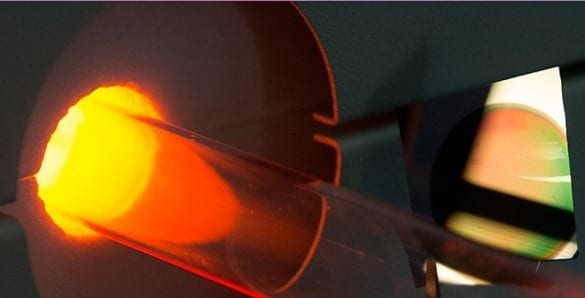
Graphene for energy use is emerging as an exciting topic of research, with breakthrough discoveries hitting the headlines every week.
Supercapacitors, the new paradigm for portable energy, are expected to replace traditional batteries in personal devices such as cellphones, laptop computers, tablets, and even electric vehicles. Supercapacitors can recharge and discharge in just seconds, but can hold enough energy to power a handheld device for several weeks. With supercapacitors, even electric cars could be charged at “electric stations” within a few minutes, with enough “gas” to drive around the whole day. Graphene supercapacitors have existed in research labs for only two years, but the progress has been tremendous.
The recently developed process to make graphene supercapacitors, which is economical and industrially scalable, starts from the widely available graphene oxide. Although the aforementioned development is awesome, a most recent one is a serious competitor in the world of graphene supercapacitors. The recent work radically departs from all known supercapacitors, by using technology’s favorite material – silicon – as the active energy-storing material.
Instead of storing energy in chemical reactions the way batteries do, “supercaps” store electricity by assembling ions on the surface of a porous material. The problem with the concept of using silicon as the porous material for supercaps is that silicon tends to react with chemicals which form the electrolyte, a chief component of any modern energy-storing device.
The novel device, developed at Vanderbilt University, takes care of the silicon reactivity problem by coating the silicon with a layer of graphene. The graphene layer, only several nanometers thin, passivates the porous silicon surface, preventing any reaction with the electrolyte. The graphene smoothly follows the structure of the pores in silicon. The silicon-graphene composite acts as the electrode of the supercap, resulting in large improvements in energy density compared to bare silicon. Taking into account the ubiquity of silicon, this new approach provides an exciting platform for grid-scale as well as integrated (portable) energy storage.
Go deeper with Bing News on:
Graphene supercaps
- Graphene in Biomedicine: Opportunities and Challenges
Graphene, whose discovery won the 2010 Nobel Prize in physics, has been a shining star in the material science in the past few years. Owing to its interesting electrical, optical, mechanical and ...
- Graphene Manufacturing Group Ltd GMG
Morningstar Quantitative Ratings for Stocks are generated using an algorithm that compares companies that are not under analyst coverage to peer companies that do receive analyst-driven ratings ...
- The Flash Pro Plus gives you a power supply anywhere for only $199.97
TL;DR: Need to charge on the go? The Flash Pro Plus, a graphene power bank powered by Panasonic™, makes it easy to charge your Apple and Android devices anywhere. It’s now only $199.97 ...
- Premier Graphene demonstrates graphene integration with building materials
Premier Graphene has conducted in-house studies to showcase progress in the integration of graphene with construction materials. During the in-house studies, the company’s team was able to ...
- Goldene: New 2D form of gold makes graphene look boring
Graphene is a bit like the Novak Djokovic of materials – it’s so damn talented that each new achievement feels passé. But now, an exciting new upstart is challenging graphene’s title.
Go deeper with Google Headlines on:
Graphene supercaps
[google_news title=”” keyword=”Graphene supercaps” num_posts=”5″ blurb_length=”0″ show_thumb=”left”]
Go deeper with Bing News on:
Graphene supercapacitors
- Graphene in Biomedicine: Opportunities and Challenges
Graphene, whose discovery won the 2010 Nobel Prize in physics, has been a shining star in the material science in the past few years. Owing to its interesting electrical, optical, mechanical and ...
- HydroGraph to Supply Pristine Graphene to Volfpack Energy for Solar Power Battery Storage
Its flagship product, fractal graphene, FGA-1, was chosen by Volfpack to be the base material of the supercapacitor design after Volfpack’s engineers determined that it outperformed materials ...
- The Flash Pro Plus gives you a power supply anywhere for only $199.97
TL;DR: Need to charge on the go? The Flash Pro Plus, a graphene power bank powered by Panasonic™, makes it easy to charge your Apple and Android devices anywhere. It’s now only $199.97 ...
- Structural disorder key to high-capacitance carbon electrodes
Structural disorder increases the capacitance of carbon supercapacitor electrodes, according to new findings from a team of UK-based researchers. The discovery could lead to the development of ...
- Rubber-like stretchable energy storage device fabricated with laser precision
Researchers have achieved a significant breakthrough in developing a small-scale energy storage device capable of stretching, twisting, folding, and wrinkling. Their study is published in the journal ...
Go deeper with Google Headlines on:
Graphene supercapacitors
[google_news title=”” keyword=”graphene supercapacitors” num_posts=”5″ blurb_length=”0″ show_thumb=”left”]











